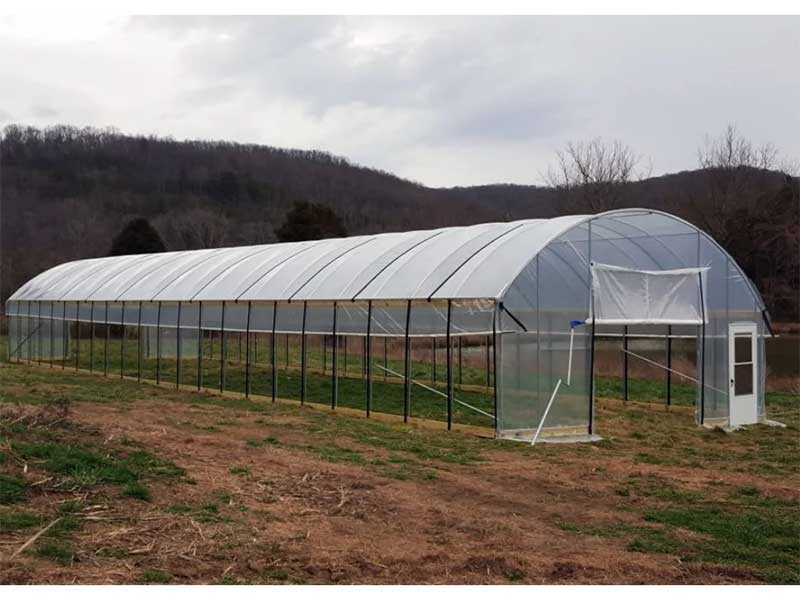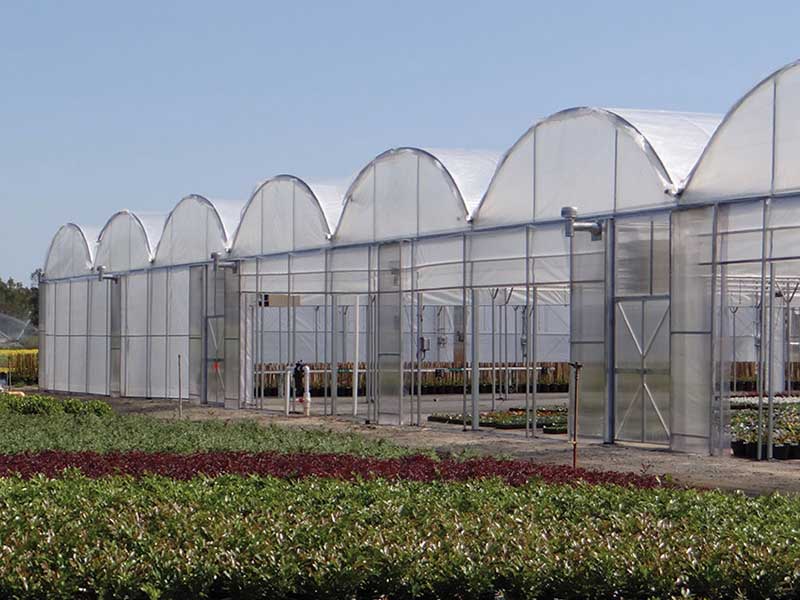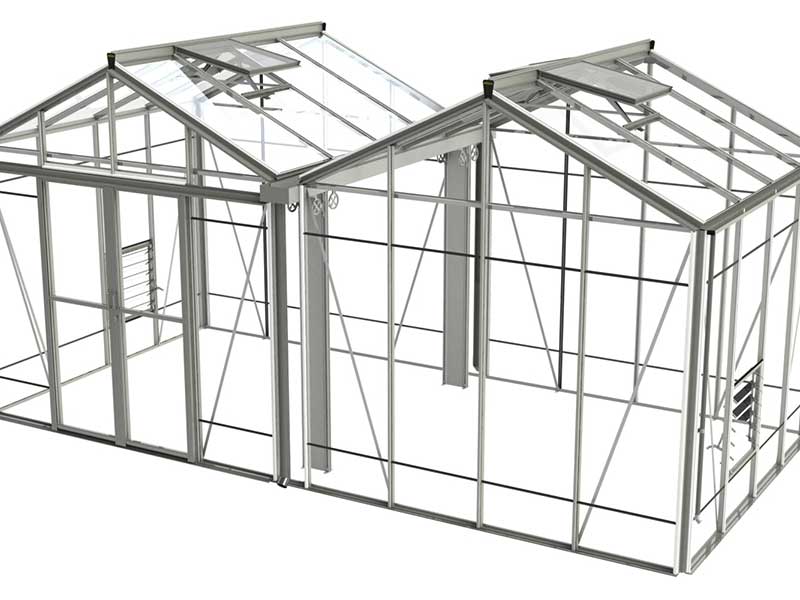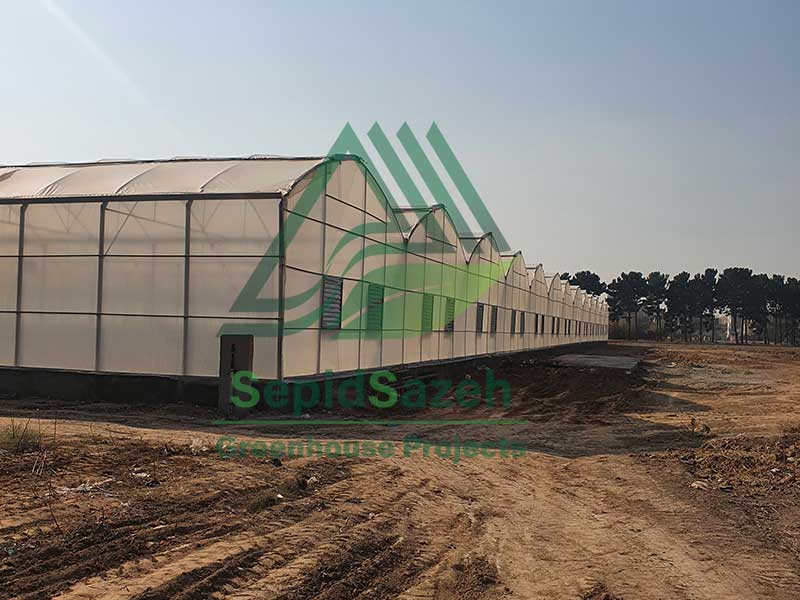Comparison of tunnel, interconnected and twin greenhouses in terms of volume and space parameters, light and ventilation
Greenhouses covered with plastic or fiberglass generally have a lighter structure and are very cheap compared to hub greenhouses covered with glass.
Tunnel greenhouses:
Tunnel greenhouses are the simplest and cheapest type of modern greenhouses with plastic covering, which are implemented in units with a section of a circle. Cheapness, quick and easy installation, the ability to better control the spread of diseases and pests from one unit to other units and receive more light per unit of greenhouse surface due to the high ratio of the outside surface to the cultivated surface are among the advantages of tunnel greenhouses. Among its disadvantages, the following can be mentioned:
1) High energy consumption for heating in winter due to the high ratio of heat exchange surface (external surface) to cultivated surface
2) A significant increase in the temperature inside the greenhouse in the summer due to the high ratio of the surface against radiation (external surface) to the cultivated surface.
3) The low volume of air available to the plant for photosynthesis (in winter) due to the low ratio of air volume inside the greenhouse to the cultivated area
4) The rapid effect of ambient temperature fluctuations on the temperature inside the greenhouse due to the low ratio of the air volume inside to the heat exchange surface (external surface) and as a result thermal shock to the plants and a negative effect on their performance
5) The impossibility of using the surface under the cover in the side parts for most of the plants (due to the arch of the structure on the sides
6) The possibility of freezing of any greenhouse unit in case of problems in its heating system (for greenhouses that do not use central heating system)

Interconnected greenhouses:
These greenhouses can be implemented without limits in dimensions and with different heights. The side walls of interconnected greenhouses are vertical unlike tunnel greenhouses and are more expensive than tunnel greenhouses. Among the advantages of these greenhouses, the following can be mentioned:
1) Less heat energy consumption than other greenhouses due to the low ratio of the heat exchange surface (external surface) to the cultivated surface.
2) Larger volume of air available to the plant for photosynthesis (in winter) due to the high ratio of air volume inside the greenhouse to the cultivated area compared to other types of greenhouses.
3) Slow effect of ambient temperature fluctuations on the temperature inside the greenhouse due to the high ratio of indoor air volume to heat exchange surface (external surface) and as a result better plant performance due to the absence of thermal shocks
4) The possibility of using the entire undercover surface (even near the walls) for all kinds of plants
5) The possibility of implementing a greenhouse with a high height (up to 8 meters) in order to increase the amount of air available to the plant, to reduce the effect of extreme temperature fluctuations on the plant to zero, or to grow tall plants such as bananas.
6) The occurrence of minimal thermal stress on plants in case of problems in one of the heating systems (for greenhouses that do not use a central heating system.)

Twin greenhouses
These greenhouses are only implemented as twins and like tunnel greenhouses, they have arched walls on the sides and the possibility of using the surface under the cover in the side parts for growing more plants is not available. On the other hand, the price of twin greenhouses is similar to that of connected greenhouses, and as can be seen in graphs A and B, in terms of ratios of heat exchange surface to cultivated surface, indoor air volume to cultivated surface, and indoor air volume to heat exchange surface, they have a better situation than tunnel greenhouses. In general, it can be said that these greenhouses are something between tunnel and interconnected greenhouses in terms of advantages and disadvantages.


